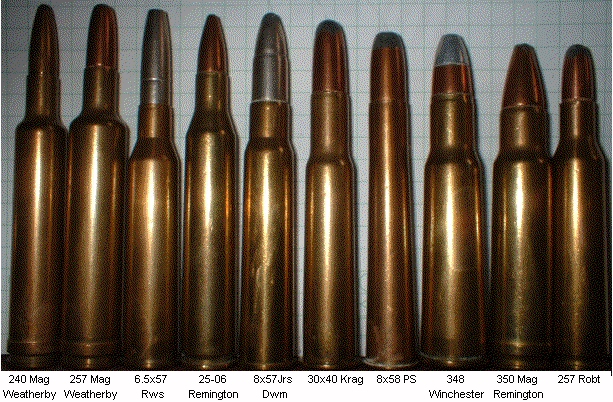The Main Principles Of Ammunition Pro Llc
The Main Principles Of Ammunition Pro Llc
Blog Article
Ammunition Pro Llc Fundamentals Explained
Table of ContentsThe 8-Second Trick For Ammunition Pro LlcThe smart Trick of Ammunition Pro Llc That Nobody is DiscussingLittle Known Facts About Ammunition Pro Llc.An Unbiased View of Ammunition Pro LlcNot known Factual Statements About Ammunition Pro Llc
The basic components of ammunition are the same for rifle, pistol, and shotgun ammo. Today we're looking at the what the standard parts of ammunition are and exactly how they work with each other to discharge a round.The bullet is seated in the open end of the instance. When you fire a bullet out of a semi-auto weapon, the weapon's extractor lifts the instance from the shooting chamber and it flies out of the gun.
A weapon's shooting pin strikes a cartridge's primer. The guide is located in the edge of the instance of a rimfire cartridge.
7 Easy Facts About Ammunition Pro Llc Explained
Gunpowder following to the instance that normally contains it. It is typically a mix of saltpeter, charcoal, and sulfur.

We call the projectiles for shotshells, which we discharge via shotguns, slugs and shot. A slug is one strong piece, generally constructed of lead. Shot is a group of pellets constructed out of lead, steel, bismuth, or tungsten alloy. Shot pellets can come in different sizes and quantities. Now that you have a fundamental understanding of the fundamental components of ammunition, you can really feel a little a lot more positive in just how your weapon and ammunition function!.
The Buzz on Ammunition Pro Llc
Stay on top of Special Deals, Advance Notification of Sales, and Shop Occasions
Fun reality: Grains are utilized to explain the mass of a bullet because right back in the very early days of guns, it was a dispenser's system of measurement, and a typical step was needed to identify just how much lead to use to make cast lead bullets (Ammunition for Sale). 'Grains' as a system of measure for weight goes all the method back to old times, and stands for the weight of a grain of wheat
(https://onecooldir.com/details.php?id=308799)For recommendation, the weight of a paper clip has to do with 16 gr. We understand that grains are a procedure of mass, and much more = larger, and heavy is good? Yes, hefty is great, however mass of the projectile isn't the only thing you require to consider when picking a round for your gun.
All About Ammunition Pro Llc
This spin is created by grooves reduced or inculcated the interior of the barrel, which are described as 'gunning'. Fun reality, this is the beginning of the term "Rifle" ex. A gunned firearm vs. smoothbore musket. The effect this spin carries projectiles is a maintaining one the bullet turning keeps the nose pointed right, similarly that a perfectly spiraled football toss is mosting likely to be far more stable and accurate in flight than an awful duck, end over end toss.
Just how does this associate to grain weight? Envision you're on one of those playground slide carousels, the ones with bars you hold on to while it rotates.
The very same impact takes place with bullets. The larger the projectile, the more effect a quicker rotate will have on it.
Ammunition Pro Llc Fundamentals Explained
However there's one more factor that we need to take into consideration when selecting a grain weight for our ammunition. As meant above, bullet velocity, or the speed of the projectile, is a major variable when figuring out the very best grain weight projectile to utilize. Velocity is affected by a few significant factors, including the kind and quantity of propellant (gunpowder), barrel length, and bullet weight.

One of the most typical grain weight rounds for 9x19mm cartridges are 115gr and 124gr. These are generally lead core, totally jacketed (FMJ) rounds. Both of these grain weight cartridges will do well in factory 9mm hand guns, to normal handgun distances (as much as 50 yards). 115 grain rounds are the most typical (and for that reason least expensive).
Report this page